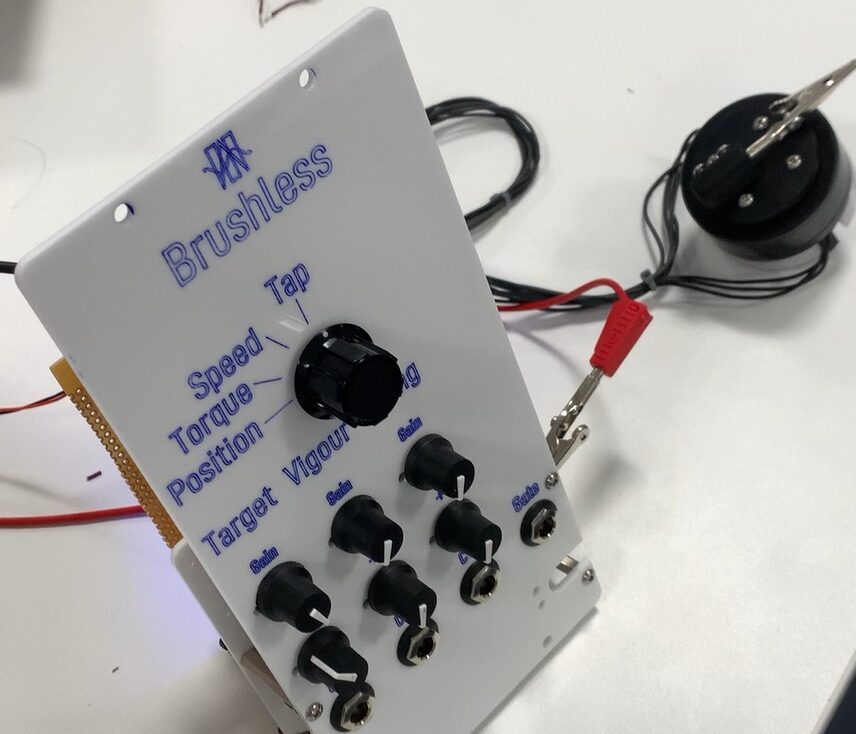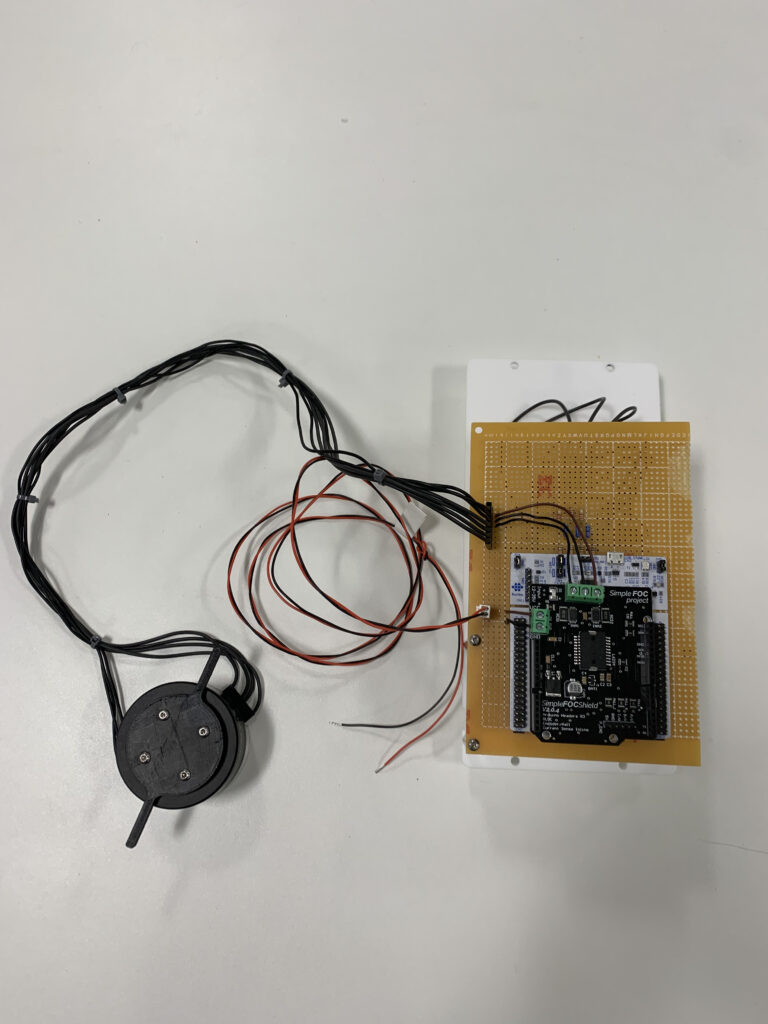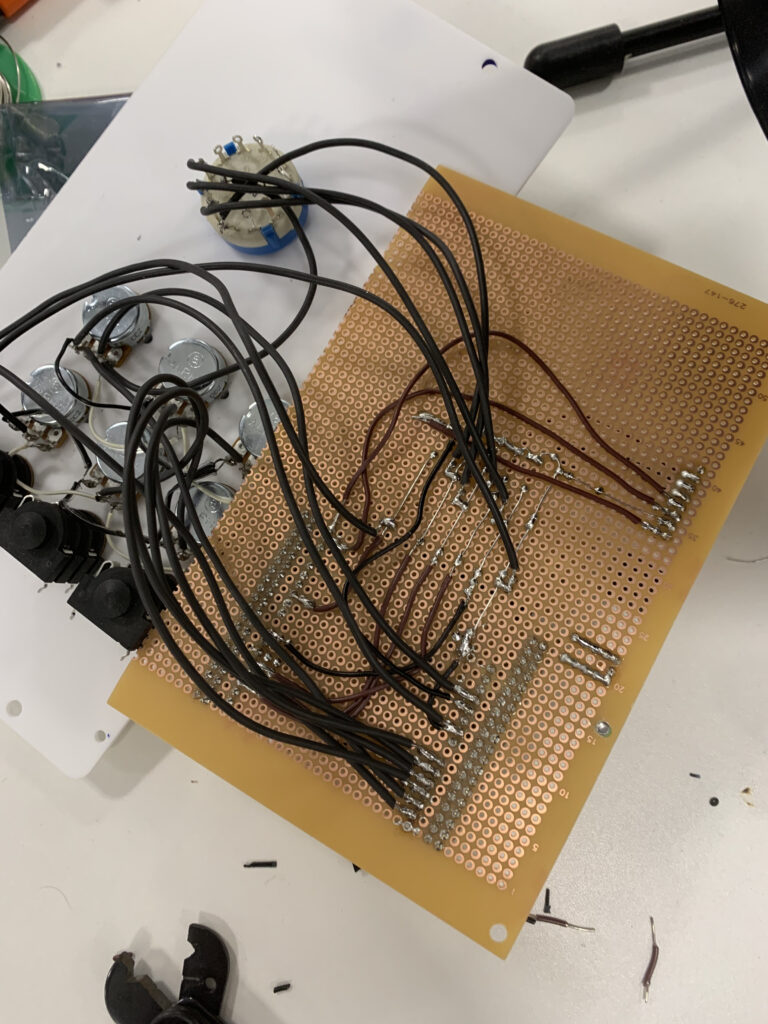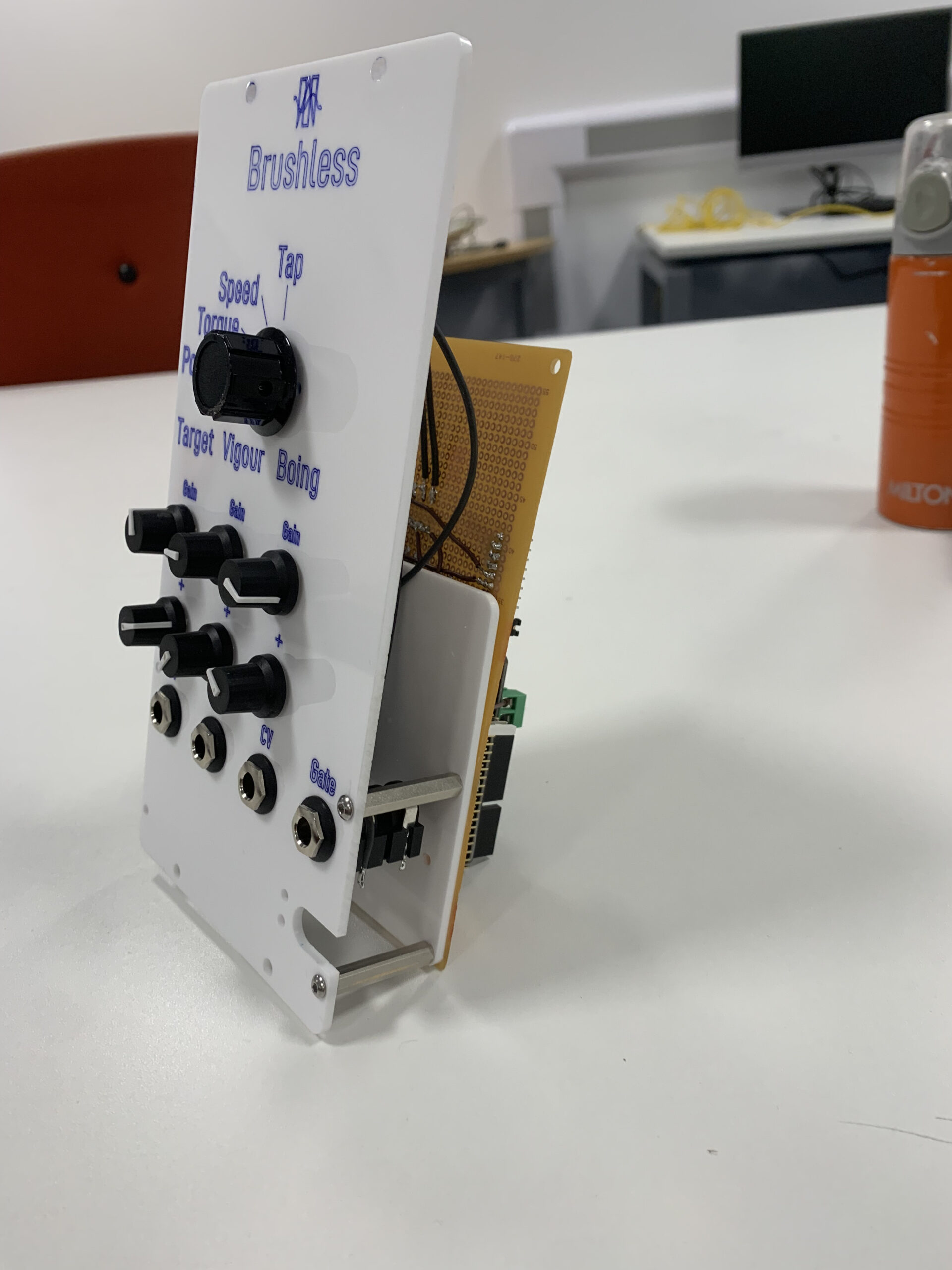Personal Project
FOC Motor Control

Personal Project
I have been making these projects from my School days, they have allowed me to grasp deeper understanding of electronics, hardware, software and algorithms.
These projects were very fun and cool to show off to other students
ABOUT
Field-oriented control (FOC) or vector control is a control technique used to obtain good control capability over the full torque and speed range for various motor types, including inductance machines, permanent magnet synchronous machines (PMSMs), and brushless DC (BLDC) motors.




Description
Introduction:
This project demonstrates the implementation of Field-Oriented Control (FOC) on a Brushless DC (BLDC) Motor, employing a Nucleo64 board in conjunction with a Simple FOC shield. The primary objective of this work is to provide efficient and precise control over the BLDC Motor.
Hardware Components:
- Nucleo64 Board: A robust and flexible microcontroller board that served as the main processing unit for this project.
- Simple FOC Shield: An additional shield used to simplify the FOC implementation process for motor control applications.
- BLDC Motor: The target motor type for which the FOC control was applied.
Methodology:
1. Connection Setup:
The hardware components were assembled, with the Simple FOC shield being interfaced with the Nucleo64 board. The BLDC Motor was then connected to the Simple FOC shield to ensure communication between the devices.
2. Motor Configuration:
The BLDC Motor was configured to function under FOC control by defining necessary parameters such as current limits, PID control values, and voltage settings. This allowed for tailored control to meet specific application requirements.
3. Implementation of FOC:
Field-Oriented Control was implemented using the provided libraries and tools. FOC enables the control of torque and speed of the BLDC motor, utilizing a rotating reference frame to align the stator current vector with the rotor magnetic field.
4. Tuning and Testing:
The system was calibrated and tuned to achieve optimal performance. Different scenarios and operating conditions were tested to ensure stability, responsiveness, and efficiency of the FOC control over the BLDC Motor.
Results:
The project successfully demonstrated the ability to control a BLDC Motor using FOC with the Nucleo64 board and Simple FOC shield. Enhanced control over speed, torque, and overall motor performance was achieved, showing potential applications in various industrial and automation tasks.
Conclusion:
The utilization of the Nucleo64 board and Simple FOC shield for FOC control on a BLDC Motor revealed an effective method to attain precise control over motor parameters. The project not only serves as an educational reference but also offers a valuable resource for industries looking to implement advanced motor control solutions.
